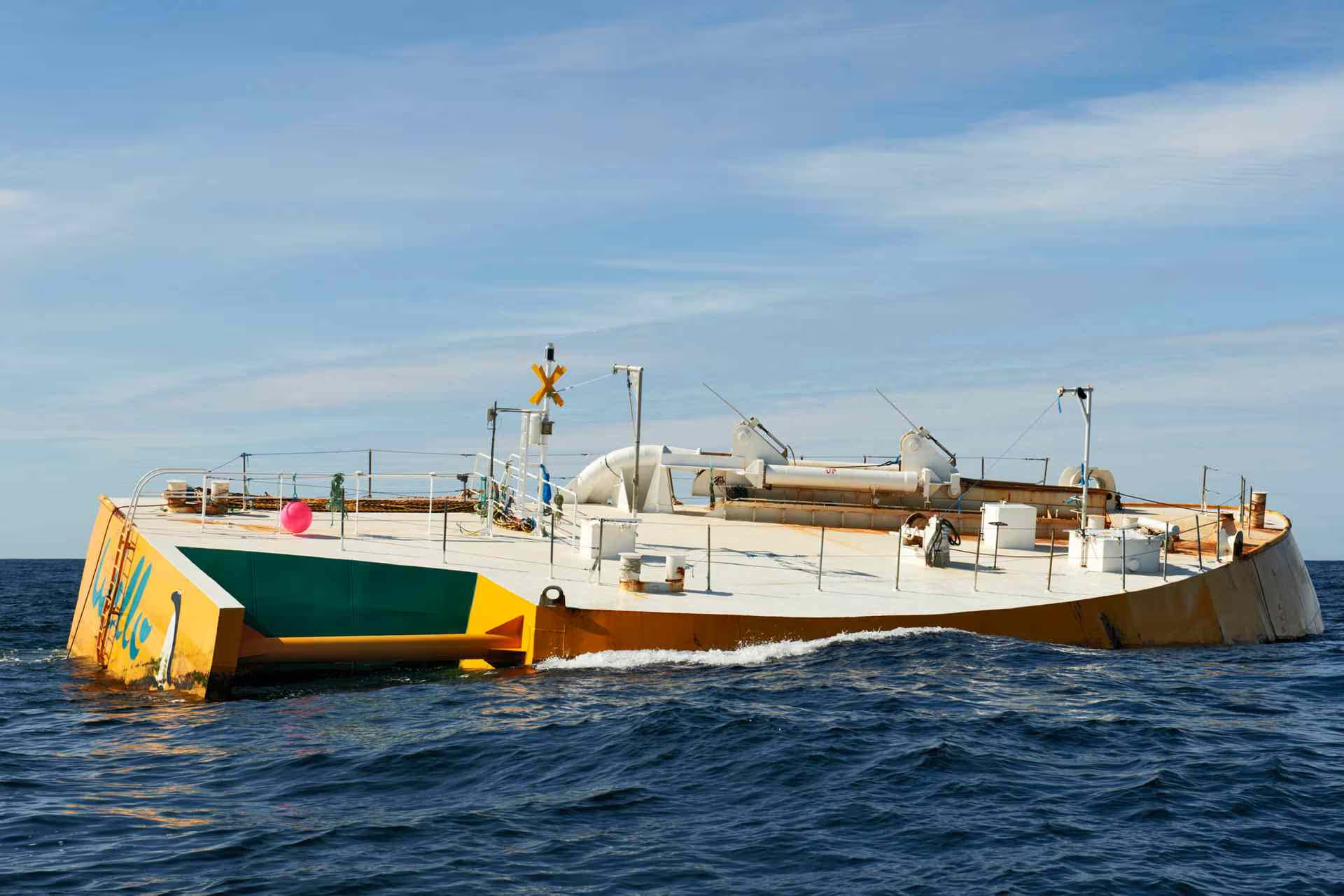Currently more than 60% of the worlds electricity is produced with fossil fuels. With 75% of the earth’s surface being covered by water, the huge clean, continues energy production potential of wave energy is rapidly increasing in interest.
Gapura Energi Utama, an Indonesian infrastructure construction company, has ordered a 10 MegaWatt Wello Penguin wave energy park.
The Penguin floats on water and captures kinetic energy from the waves, which is then turned into electrical power with zero emissions. The vessel is positioned away from the wave breaking zone.
“Indonesia’s ocean wave energy potential is more than 17 GW, but not yet explored at all. Teaming up with Wello is truly a brilliant idea and a strategic maneuver to capture the huge ocean waves utility market. This alliance could ignite the fabrication of a 100% local content hull and other supporting equipment could be produced locally as well.”say Komang Agus Pribadiana, Gapura Energi Utama president manager.
The park will be located next to Nusa Penida Island in Bali. It will be the largest wave energy park globally.
The delivery will take place after the permission process is finalized, which is estimated to occur by the end of 2018.
The patented Wello Penguin wave energy converter has been developed and tested for almost 10 years.
The Penguin fleet can consist of anything form one unit upwards, depending on the desired energy production capacity.
“The cost of energy generated with Wello Penguin is already very competitive compared to offshore wind energy, and in serial production we aim for a further 50% cost reduction”, Heikki Paakkinen, the CEO and founder of Wello.
The Penguins are anchored to sea bottom at a depth of approximately 50 meters. Only 2 meters of each unit is visible above the surface. It produces no noise pollution and it can be utilized on almost any ocean coast.
“I am extremely proud that our long-term development work is now rewarded with this order”, said Heikki Paakkinen, the CEO and founder of Wello.
The device does not have any moving parts in contact with sea water and the service needs are minimal. Remote connection allows for continuous monitoring and adjustment of the solution.
